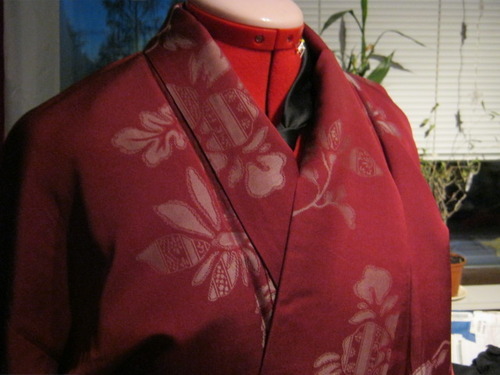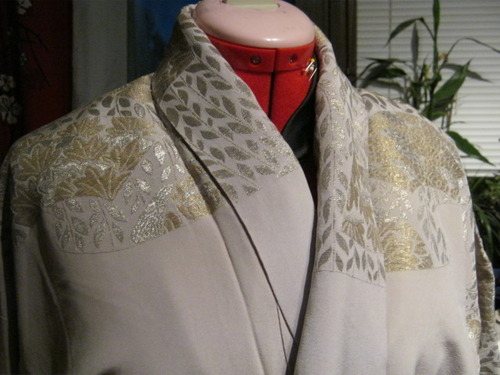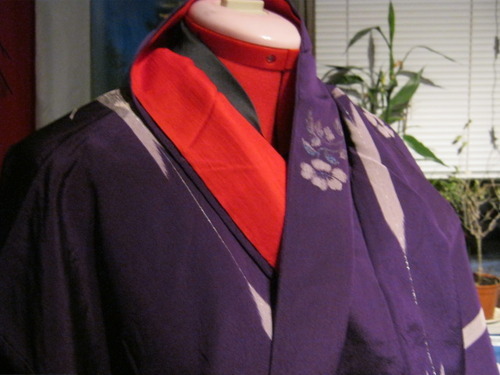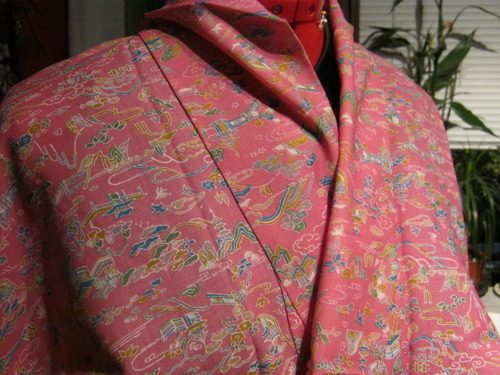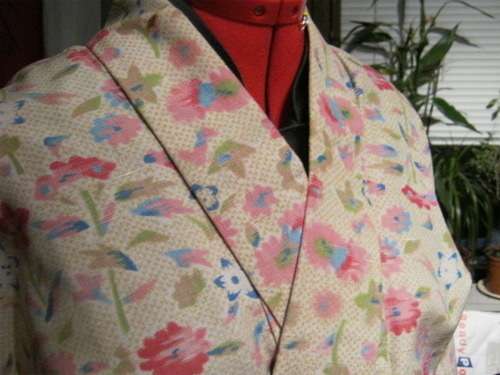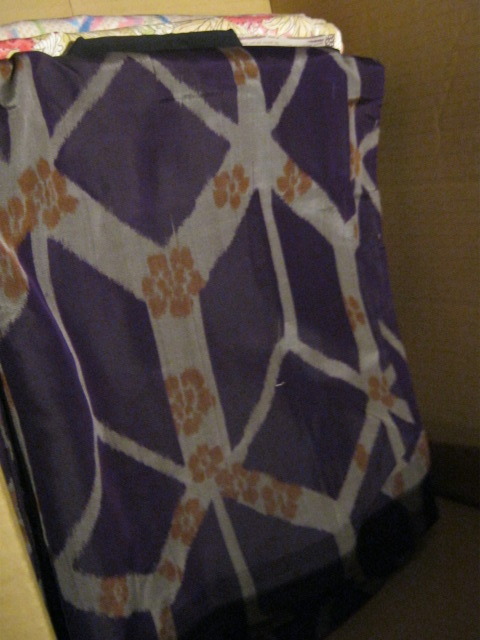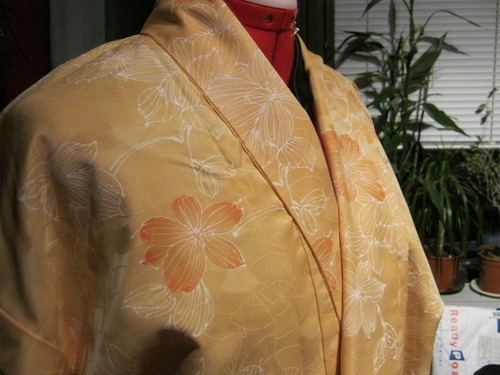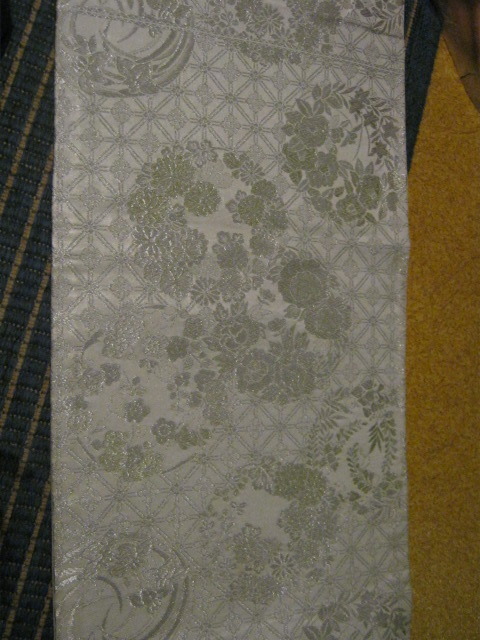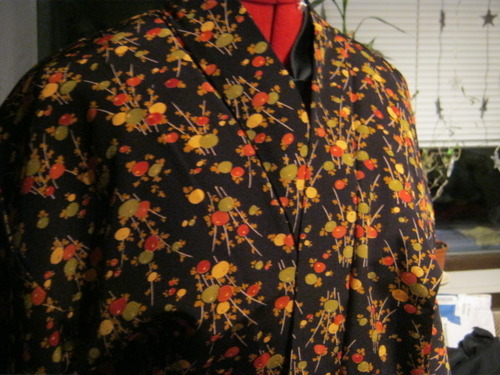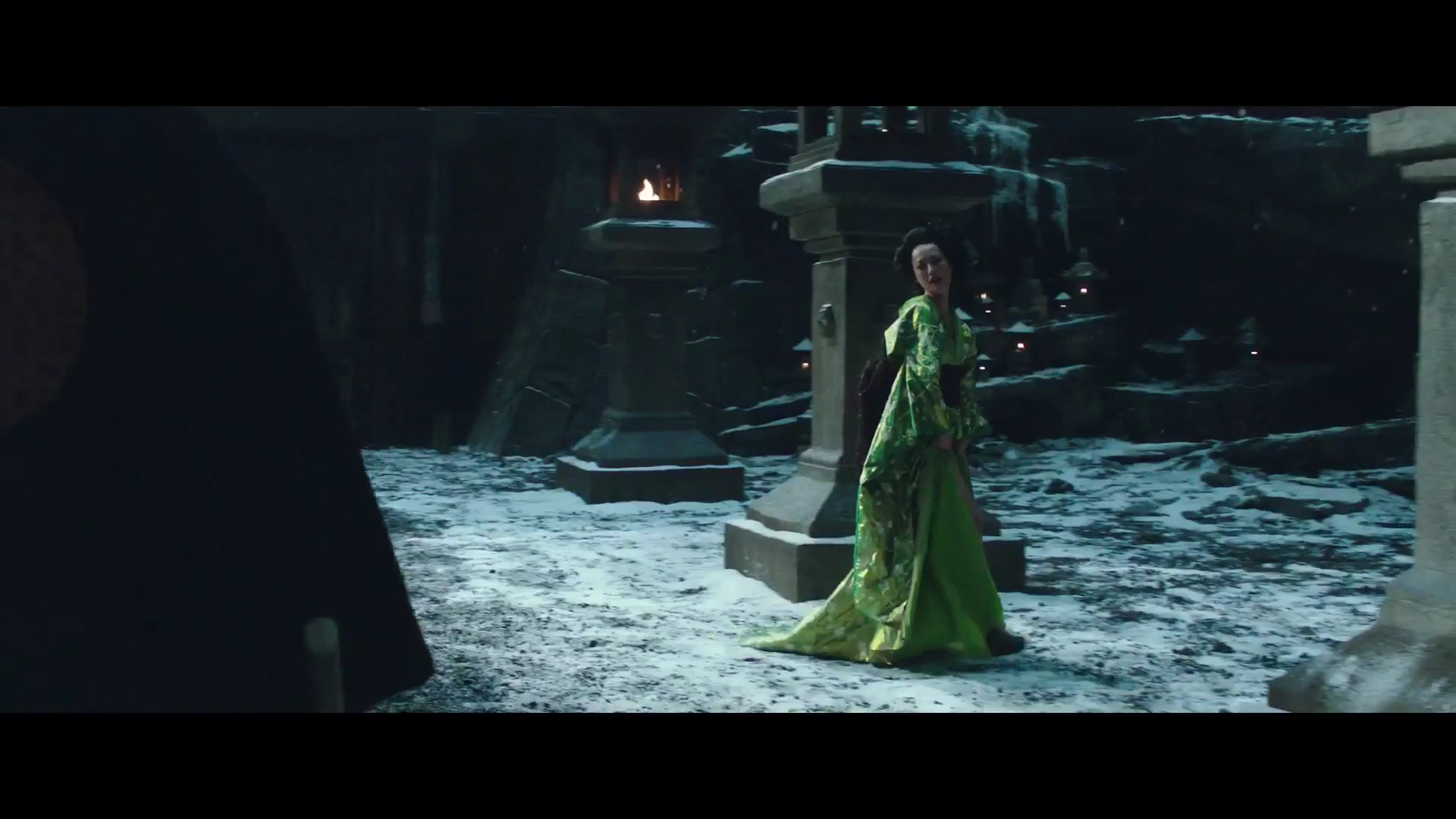You can also see my awesome,
lauantai 4. lokakuuta 2014
It's october with the Striped Sofia komon
I made this komon from Ikea fabric. It's sturdy cotton, 5.99€/m. I'm very happy how it turned out. <3 Also, proper kitsuke pictures from our new appartment! There's so much room now for pictures! (and hobbies in general...)
You can also see my awesome,totally street cred Aino slippers!
You can also see my awesome,
perjantai 28. helmikuuta 2014
American Duchess now has Regency boots!
Ok, regency is probably one of my favourite time periods in western fashion. And now there's regency boots from the glorious American Duchess! Yay!
They are right now in pre-order, but will soon be stocked up.
Nankeen boots were an early 19th century fabric walking boots with adjustable lacing closure. Just like boots of old, our Nankeens have soft toes (no toe caps), leather soles, stitched eyelets, and bound edges.
The name "Nankeen" comes from the variety of cotton used to make these boots, originally a pale buff-colored cloth manufactured in Nanjing, China. Shortly after its rise in popularity, Nankeen cloth was "knocked off" in Europe, and made of just ordinary cotton dyed to the characteristic khaki color. Ironically, our modern Nankeen cloth is, in fact, made in China, which is entirely historically accurate!
They are also period accurate. Don't believe me? Check her resource material.
They are right now in pre-order, but will soon be stocked up.
Nankeen boots were an early 19th century fabric walking boots with adjustable lacing closure. Just like boots of old, our Nankeens have soft toes (no toe caps), leather soles, stitched eyelets, and bound edges.
The name "Nankeen" comes from the variety of cotton used to make these boots, originally a pale buff-colored cloth manufactured in Nanjing, China. Shortly after its rise in popularity, Nankeen cloth was "knocked off" in Europe, and made of just ordinary cotton dyed to the characteristic khaki color. Ironically, our modern Nankeen cloth is, in fact, made in China, which is entirely historically accurate!
They are also period accurate. Don't believe me? Check her resource material.
maanantai 3. helmikuuta 2014
So what was in my Yamatoku Bundle of Doom
Blue green haori with kiku embroidery. Very nice and has a pretty animal patterned lining.
Next one is an unmade obi. The base is navy blue, which is not shown properly in the image.
This nagoya is very small. I mean, really small! I'm not sure if I can wear this properly because of the lenght. Also the pattern runs a bit funny, so I'm in the belief that this has been a kimono once and has been remade into an obi.
Grey patterned obi. Might be a fukuro. I still need to measure it.
Red and black komon. Quite small, needs adjusting for comfortable wear, but for hime style it's working.
Men's juban with tiger and dragon pattern. I offered this to fiancé but he said he was not impressed with the pattern. If this was women's, I'd wear it to bits.
Pink komon. Has a shiny quality to it. Fit is ok.
Girl's furisode. I'm guessing age 13 as it's quite long and does not have tucks. Has stains, but othervice in wearable condition.
Another komon. I was not impressed with this one, might put it up for trade.
This lightweight summer komon was hiding under another kimono and I fell head over heels for it. Rather short, but I'm in love.
A very busy patterned komon. It was not easy to look at this as I have a headache. Quite new as it has modern clothing tag attached. Which is funny as the kimono in itself is very short. I might have to take a peak into the lining to see if there's fabric to add more lenght.
So that was my 10 haul. I'm quite happy with my catch... Now to find time for wearing....
Tunnisteet:
bundle of doom,
clothing,
kimono,
komon,
nagoya obi,
obi,
traditional,
yamatoku
Just a head up!
The Yamatoku 10-pack arrived. Pictures following an due time.
The package contained:
1 men's juban
3 obis
1 young girl's furisode/cho-furisode (I only went through the box quickly so I can't say for sure yet)
1 haori
5 komon
So my 10 pack actually had 11 items in it!
The package contained:
1 men's juban
3 obis
1 young girl's furisode/cho-furisode (I only went through the box quickly so I can't say for sure yet)
1 haori
5 komon
So my 10 pack actually had 11 items in it!
sunnuntai 2. helmikuuta 2014
Yamatoku 20 Bundle of Doom
I was supposed to get my 10 pack on Friday, but the delivery man tried to deliver it to the wrong door and since my neighbour was not home, it was claimed "recipient not home" and was shipped back to Tampere. I should get that tomorrow.
In the meantime, I realized that I have not updated my 20 pack haul in here. Boo for me. I got to keep 15 as I sent 6 (yup, there was 21 items in my pack) to a fellow IGer, Miravisu.
A bingata haori that fits nicely! I've been waiting to get myself a good haori and now I have it!
Black'n'white hitoe komon. It has patterns of sake bottles, so this will be my choise for Midsummer Festival. (Even though I'm a teatotaller).
This wine red komon has a color fade on the front hem, but it's not too noticable. Fit is a bit too small.
My breath was knocked off when I pulled this houmongi out of the pile. It's stunning and breathtaking and I didn't notice flaws (I might have to look again). It's lovely pearl/dove grey with gold and silver embroidery on both shoulders and hem.
Grandma's couch from the 70's. It's an orange based hitoe komon that still oddly pleases my eyes for some reason... I just have no idea what I should pair with it... I keep seeing green obi, but I'm not sure...
This kimono was surprisingly heavy, but then I realized that the entire hem was covered with gold thread embroidery. It has a very Marimekko like feel to it. It's a houmongi.
Possible taisho era komon with vermillion lining. The image does not do justice to the fact that that lining is RED. I mean the true, raw, passionate RED.
Peach colored komon. I wasn't sure at first if this was a houmongi or komon, but it has more "komon" qualities than houmongi, so I'm going to go with a more festive komon.
Pink, blue and brown with white accents komon that I believe has belonged to a younger girl, maybe age 15. It's lenght is ok, but it's really tiny widht wise. Also the colors feel more younger girl to me.
Flowery hitoe komon. Fit is ok. This didn't strike me, but I still like it.
Another possibly taisho era komon. There are spots on this one, but not too bad. Fit is too small. Has vermillion lining in the sleeves, so part of the lining might have been changed at some point.
Apricot colored flowery komon. I like it. It's fancy, it fits. I just love this share of orange.
An embroidered fukuro obi. I still need to measure and inspect this more carefully wether to claim this fukuro or bridal maru. On the first look it looks more fukuro.
Another haori! This one is lined and needs adjusting before it fits nicely, but I love it.
I'll update images of the 10 pack haul later this week. Hopefully tomorrow the delivery man finds the correct door.
In the meantime, I realized that I have not updated my 20 pack haul in here. Boo for me. I got to keep 15 as I sent 6 (yup, there was 21 items in my pack) to a fellow IGer, Miravisu.
A bingata haori that fits nicely! I've been waiting to get myself a good haori and now I have it!
Black'n'white hitoe komon. It has patterns of sake bottles, so this will be my choise for Midsummer Festival. (Even though I'm a teatotaller).
This wine red komon has a color fade on the front hem, but it's not too noticable. Fit is a bit too small.
My breath was knocked off when I pulled this houmongi out of the pile. It's stunning and breathtaking and I didn't notice flaws (I might have to look again). It's lovely pearl/dove grey with gold and silver embroidery on both shoulders and hem.
Grandma's couch from the 70's. It's an orange based hitoe komon that still oddly pleases my eyes for some reason... I just have no idea what I should pair with it... I keep seeing green obi, but I'm not sure...
This kimono was surprisingly heavy, but then I realized that the entire hem was covered with gold thread embroidery. It has a very Marimekko like feel to it. It's a houmongi.
Possible taisho era komon with vermillion lining. The image does not do justice to the fact that that lining is RED. I mean the true, raw, passionate RED.
Peach colored komon. I wasn't sure at first if this was a houmongi or komon, but it has more "komon" qualities than houmongi, so I'm going to go with a more festive komon.
Pink, blue and brown with white accents komon that I believe has belonged to a younger girl, maybe age 15. It's lenght is ok, but it's really tiny widht wise. Also the colors feel more younger girl to me.
Flowery hitoe komon. Fit is ok. This didn't strike me, but I still like it.
Another possibly taisho era komon. There are spots on this one, but not too bad. Fit is too small. Has vermillion lining in the sleeves, so part of the lining might have been changed at some point.
Apricot colored flowery komon. I like it. It's fancy, it fits. I just love this share of orange.
An embroidered fukuro obi. I still need to measure and inspect this more carefully wether to claim this fukuro or bridal maru. On the first look it looks more fukuro.
Another haori! This one is lined and needs adjusting before it fits nicely, but I love it.
I'll update images of the 10 pack haul later this week. Hopefully tomorrow the delivery man finds the correct door.
Handmade plaid komon
About a year ago I bought the Yumi Yamamoto book Making Casual Kimono & Yukata.
Which is a lovely book by itself. There were two kimonos that caught my eye immediately while going through the book:
So when I found a green and blue plaid patterned fabric at the local fabric store, I grabbed it. Here's the result:
I still need to find time to actually wear this, but I'm happy to say that for a person who's 160 tall, the pattern in the book does not need altering to fit. Althought the around hip size could have been a tad bit smaller, but since it's still in comfortable fit zone it's ok.
Which is a lovely book by itself. There were two kimonos that caught my eye immediately while going through the book:
So when I found a green and blue plaid patterned fabric at the local fabric store, I grabbed it. Here's the result:
I still need to find time to actually wear this, but I'm happy to say that for a person who's 160 tall, the pattern in the book does not need altering to fit. Althought the around hip size could have been a tad bit smaller, but since it's still in comfortable fit zone it's ok.
keskiviikko 8. tammikuuta 2014
"Kimonos" in the 47 ronin
I've been watching trailers, costume featurette and images of the new 47 ronin movie with Keanu Reeves and I feel personally that even though the kimono for men is rather nice, the kimono for women is like a nail on a blackboard. So, after a long silence on my blog, I felt like I should write something about period clothing during that time.
47 ronin is a story that starts in the 18th century, or 1702, which is nearly the middle of Edo period (Tokugawa shogunate). It's the Golden Age of the Floating Worlds as merchants are becoming richer and money flows to the bordelles. Courtesans are becoming the Divas of the Day, the fashion icons that the ladies of the town are imitating. Ladies of court and nobility cling to old principles of dress. Women's clothing refomation happened in 1722.
Let's have a look at the movie costumes shall we?
What I can see is very nice, off-the-shoulders dress with elizabethan sleeves and something that might be considered a waist cincer rather than actual obi, as it accentuates the shape of the waist and the pelvis. Also, the skirtlike hem is more chinese hanfu/ korean hanbok than Edo period kimono. Also, I'm a bit offended by the colored collar on the right. It was popular during mid-Edo period to wear black collar on your kimono so oil-stains from your hair would not show. Yellow kihachiyo collars could have been seen nearer 1900's on Tokyo's modern youth with Gibson Girl hairdo's.
I feel like that collar is offending me on a personal level. I mean what is it doing in a kimono? I can relate it to the collar worn by high government officials, warriors in court dress etc. but highly exaggerated. I don't think I've ever seen a woman wear such a garment, only men. Also, I keep wondering if the collars we see of the costume underneath are of a juban, or another kimono. If it's another kimono, all I can ask is, where the bloody hell are your undergarments!?
There's also no opening in the back of those sleeves. But during 1702, there was no hanging sleeves. Sleeve's detached themselves from the sides of the kosode somewhere around 1770, which was the final kickstart for the obi to expand to it's full glory.
Also, the musubi in the last image resembles the fukura suzume musubi except that the end is left hanging. I'd like to point out that during this time period, the obi is still barely over 6 inches wide. Women's obi in 1730 was about 10 inches and by 1800's it's widened to the foot wide obi we know today. But back to the topic. Obi was floppy and the knots were floppy. Why? Because most of the known helps for tying the obi today didn't exist! Meaning that tying the fukura suzume in 1702 was more or less impossible. Also the obi in the picture is clearly wider than 6 inches.
This would have been closer to the style of the day:
As you see, the obi is a loose knot, the sleeves are still relatively small, but the hem of the kimono needs to be hiked up for walking. The dressing is done in layers, you can spot atleast 3 layers on the bottom right image.
I seriously hope this scene was flipped for the featurette or then the people are The Walking Dead. I keep wondering if the costume of Mika is supposed to resemble the junihitoe which was the official dress for ladies of the court. There's some sleeve similarities, but I am not even going to talk about the collar.
Ladies in the background are wearing dildos on their heads.
I'm not saying it's not accurate. There was this sort of hairstyle in the history. And they actually did do some research on courtesans (WHOA), because this was the hairstyle used by courtesans during Muromachi period. Also the ladies seem to be wearing something that looks like men's kataginu on top of their kimono. And again with the long sleeves.... Obis atleast are more period accurate.
Need I even start with this? First of all there's the cleavage. Until westernazation the japanese did not consider the cleavage worth the erotic symbol it's in the west. "You got boobs, so what?". What was erotic in Japan those days was the back of the neck, the underside of the wrist and the peak of naked toes under the many layers of a courtesans kimonos. Not boobs. And I'm sure brassiere was not invented until 1900's after the decline of the corset. I could also say something about those medieval princess sleeves you can easilly spot on the top image.
Also the kimono in the lower image resembles more hanfu, with the flowing skirt hem, than an actual kimono of the feodal Japan. Which is a shame because the men's costumes look so nice. There's probably mistakes on those too, but I was practicly blinded by the shock from the ladies kimonos.
I shall end my rant now.
47 ronin is a story that starts in the 18th century, or 1702, which is nearly the middle of Edo period (Tokugawa shogunate). It's the Golden Age of the Floating Worlds as merchants are becoming richer and money flows to the bordelles. Courtesans are becoming the Divas of the Day, the fashion icons that the ladies of the town are imitating. Ladies of court and nobility cling to old principles of dress. Women's clothing refomation happened in 1722.
Let's have a look at the movie costumes shall we?
What I can see is very nice, off-the-shoulders dress with elizabethan sleeves and something that might be considered a waist cincer rather than actual obi, as it accentuates the shape of the waist and the pelvis. Also, the skirtlike hem is more chinese hanfu/ korean hanbok than Edo period kimono. Also, I'm a bit offended by the colored collar on the right. It was popular during mid-Edo period to wear black collar on your kimono so oil-stains from your hair would not show. Yellow kihachiyo collars could have been seen nearer 1900's on Tokyo's modern youth with Gibson Girl hairdo's.
I feel like that collar is offending me on a personal level. I mean what is it doing in a kimono? I can relate it to the collar worn by high government officials, warriors in court dress etc. but highly exaggerated. I don't think I've ever seen a woman wear such a garment, only men. Also, I keep wondering if the collars we see of the costume underneath are of a juban, or another kimono. If it's another kimono, all I can ask is, where the bloody hell are your undergarments!?
There's also no opening in the back of those sleeves. But during 1702, there was no hanging sleeves. Sleeve's detached themselves from the sides of the kosode somewhere around 1770, which was the final kickstart for the obi to expand to it's full glory.
Also, the musubi in the last image resembles the fukura suzume musubi except that the end is left hanging. I'd like to point out that during this time period, the obi is still barely over 6 inches wide. Women's obi in 1730 was about 10 inches and by 1800's it's widened to the foot wide obi we know today. But back to the topic. Obi was floppy and the knots were floppy. Why? Because most of the known helps for tying the obi today didn't exist! Meaning that tying the fukura suzume in 1702 was more or less impossible. Also the obi in the picture is clearly wider than 6 inches.
This would have been closer to the style of the day:
As you see, the obi is a loose knot, the sleeves are still relatively small, but the hem of the kimono needs to be hiked up for walking. The dressing is done in layers, you can spot atleast 3 layers on the bottom right image.
I seriously hope this scene was flipped for the featurette or then the people are The Walking Dead. I keep wondering if the costume of Mika is supposed to resemble the junihitoe which was the official dress for ladies of the court. There's some sleeve similarities, but I am not even going to talk about the collar.
Ladies in the background are wearing dildos on their heads.
I'm not saying it's not accurate. There was this sort of hairstyle in the history. And they actually did do some research on courtesans (WHOA), because this was the hairstyle used by courtesans during Muromachi period. Also the ladies seem to be wearing something that looks like men's kataginu on top of their kimono. And again with the long sleeves.... Obis atleast are more period accurate.
Need I even start with this? First of all there's the cleavage. Until westernazation the japanese did not consider the cleavage worth the erotic symbol it's in the west. "You got boobs, so what?". What was erotic in Japan those days was the back of the neck, the underside of the wrist and the peak of naked toes under the many layers of a courtesans kimonos. Not boobs. And I'm sure brassiere was not invented until 1900's after the decline of the corset. I could also say something about those medieval princess sleeves you can easilly spot on the top image.
Also the kimono in the lower image resembles more hanfu, with the flowing skirt hem, than an actual kimono of the feodal Japan. Which is a shame because the men's costumes look so nice. There's probably mistakes on those too, but I was practicly blinded by the shock from the ladies kimonos.
I shall end my rant now.
Tilaa:
Kommentit (Atom)




























